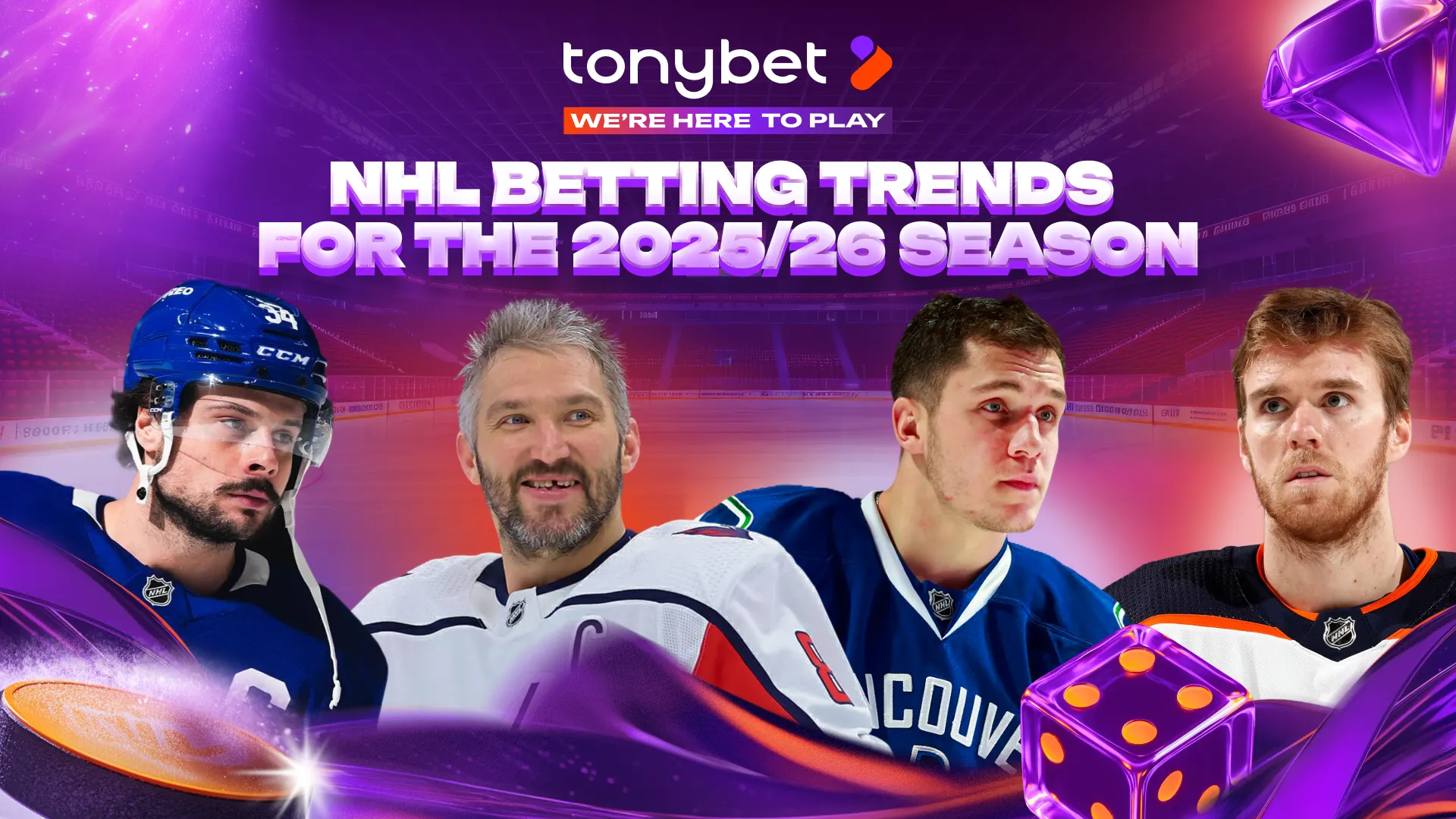Understanding the Modern NHL Betting Landscape
The Evolving Landscape of NHL Wagering: More Data, More Markets
The 2025/26 NHL season will give us far more wagering opportunities through advanced analytics. Modern NHL betting data shows sharp money gravitating toward data-driven approaches, incorporating Corsi, Expected Goals (xG), and high-danger scoring chances.
The explosion of markets — from moneylines to player props — demands analytical approaches for finding value. Understanding probability, variance management, and forecasting is essential for betting confidently these days.
Early Futures Markets, and What They’re Telling Us
Stanley Cup Futures: Key Teams, Odds Movement, and Public Bias
Stanley Cup future odds have shown significant early movement. According to Tonybet, top contenders entering the season include:
- Carolina Hurricanes: +752
- Edmonton Oilers: +802
- Tampa Bay Lightning: +1103
- Vegas Golden Knights: +752
- Colorado Avalanche: +702 (favourites)
- Florida Panthers: +852 (defending champions)
- Dallas Stars: +1002
- New Jersey Devils: +1103
- Toronto Maple Leafs: +2005
Defending champions Florida Panthers saw odds change a bit after injuries to Aleksander Barkov and Matthew Tkachuk. Despite setbacks, they remain Eastern Conference Finals favourites at +390 as of November 2025.
Award Futures: Value Picks and Long Shots
For the Hart Trophy (MVP), while Connor McDavid and Nathan MacKinnon dominate the betting overall, players like Jesper Bratt at +3900 offer long-shot value if they go the way fans are hoping.
The Vezina Trophy race is also quite open this year, as goaltending volatility creates variance opportunities through monitoring save percentages and workload.
For the Frank J. Selke Trophy, analyzing situational matchups and defensive metrics provides edges that casual bettors tend to overlook.
Scheduling, Travel, and Situational Trends Shaping Bets
Impact of Back-To-Back Games, Road Trips, and Rest Days on Outcomes
The NHL weekly schedule is great at creating solid handicapping opportunities. Teams on back-to-backs show reduced performance, especially with travel. Moreover, squads with more than two days of rest hold advantages over zero-rest opponents.
Long road trips only compound that fatigue even more, with performance falling day by day. Teams may start strong but fade or find rhythm after struggles. Goaltender rotation patterns provide edges when identified before the public catches on.
Home vs. Road Trends, and How Early-Season Data Is Breaking Expectations
The 2025/26 season shows home teams winning approximately 54% of games. Home favourites are converting at 64.1% straight-up but only covering the puck line at roughly 50%.
However, what’s even cooler is that home underdogs are winning at 44.4%, higher than their odds suggest, creating systematic value. Road underdogs are winning approximately 40.6%, an improvement that sharp bettors are exploiting. Canadian teams suffer from “hometown bias,” where local betting inflates lines, creating opponent value.
Moneyline, Puck Line, and Totals: Where the Stats Point This Season
Straight-up and ATS Trends: Favourite vs Underdog Dynamics
NHL betting predictions for 2025/26 emphasize how important understanding favourite versus underdog dynamics is. While favourites are winning more often overall, they don’t cover at the same high rates, particularly on the puck line. This efficiency in the betting markets means bettors must find spots where true team performance diverges from public perception.
The sweet spot for puck line betting appears to be when model projections show a 2-5% edge over the posted odds. This range has produced consistent positive return on investment (ROI) for data-driven bettors.
Underdog betting really needs you to have some discipline and strategy. The key is identifying dogs with strong underlying metrics (Corsi, xG, high-danger chances) that haven’t yet translated to wins.
Over/Under (Totals) Trends: Scoring Environment and Game Flow
Totals betting requires understanding the current scoring environment. With lines typically set at 5.5, 6.0, or 6.5 goals, small edges create value. Teams that exceed their xG tend to regress toward their xG averages over time.
Key forecasting factors include special teams efficiency, goaltender matchups and recent save percentages, pace of play, and team defensive structures.
Leveraging Analytics and Betting Strategy in 2025/26
Integrating Data-Driven Models, Trend Spotting, and Value Detection
To get better at NHL betting, you’ll need to integrate multiple data sources. As we mentioned, the most effective approach combines team-level metrics (Corsi, Fenwick, xG at 5v5), player performance (ice time, shooting percentages, usage patterns), situational factors (rest, travel, lineup changes), and goaltending analytics (save percentage, goals saved above expected).
The key is consistency in methodology and honest evaluation of results — don’t lie to yourself.
Teams winning despite poor possession are probably not going to keep that level of play up, while teams losing despite strong underlying numbers may be due for positive regression. The 2025/26 season emphasizes using data with nuance, as teams generating high xG consistently outperform those relying on volume shooting.
Mistakes Bettors Should Avoid: Chasing Favourites, Ignoring Scheduling, and Public Overreaction
Chasing favourites without considering price is the most expensive mistake: winning 60% of bets at -200 odds still loses money. Overvaluing brand names creates inflated lines that sharp money fades.
Ignoring scheduling factors surrenders edges:
- Back-to-backs, particularly on the road
- Long road trips beyond four games
- Rest disparities between opponents
- Goaltender rotation decisions
Responsible Gambling
Sports betting should be entertaining and sustainable. Set strict bankroll limits and never wager more than you can afford. Avoid chasing losses or increasing stakes during cold streaks. If gambling negatively impacts your life, seek help through the National Council on Problem Gambling (1-800-522-4700).
FAQ
When is the best time to place a futures bet for the 2025/26 NHL season?
How do scheduling and travel affect betting value in NHL games?
What trends are most reliable for totals bets in the 2025/26 season?
How should bettors use analytics without falling into trap bets?





 Juan Pablo Aravena
Juan Pablo Aravena 